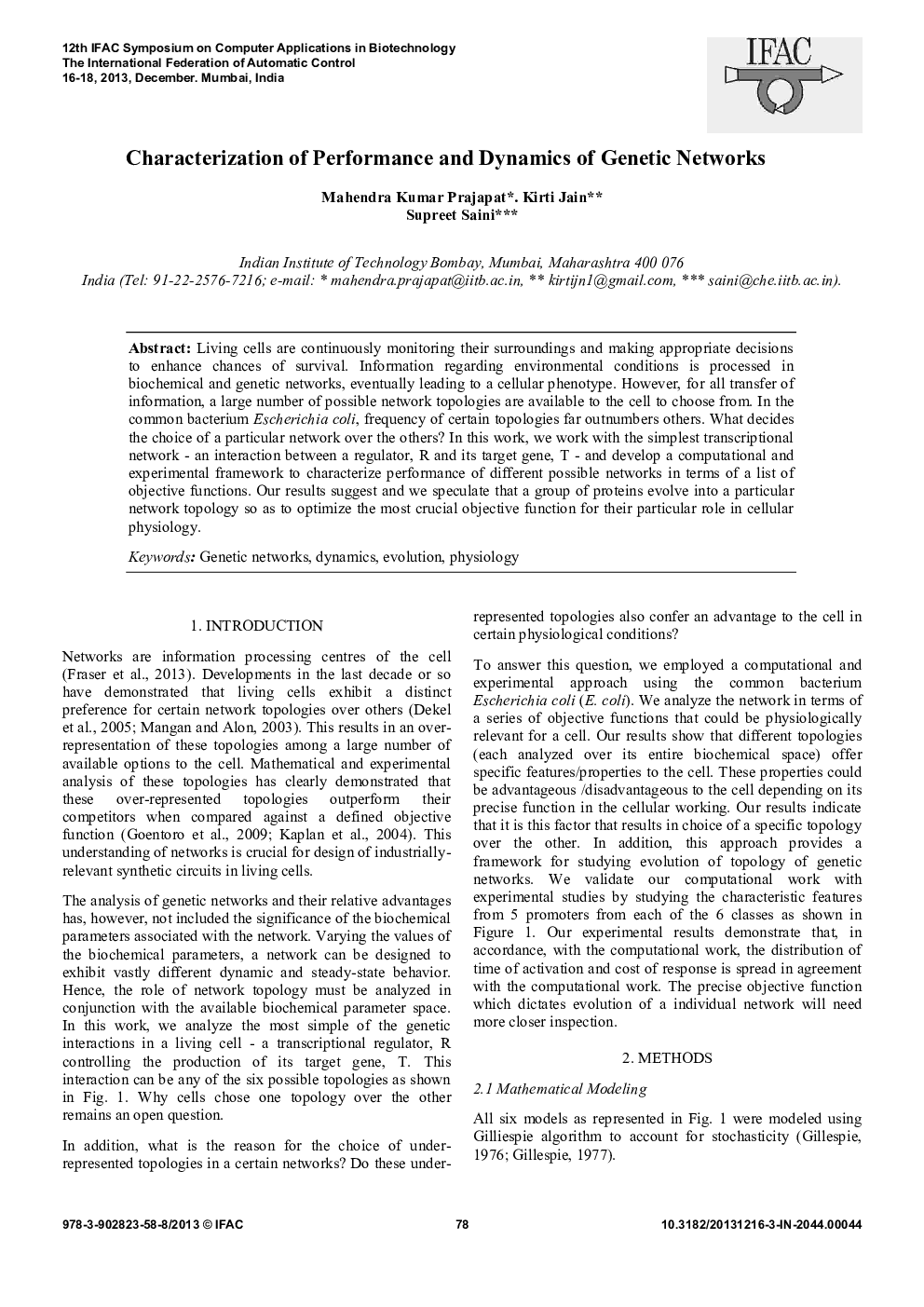| Article ID | Journal | Published Year | Pages | File Type |
|---|---|---|---|---|
| 713952 | IFAC Proceedings Volumes | 2013 | 6 Pages |
Living cells are continuously monitoring their surroundings and making appropriate decisions to enhance chances of survival. Information regarding environmental conditions is processed in biochemical and genetic networks, eventually leading to a cellular phenotype. However, for all transfer of information, a large number of possible network topologies are available to the cell to choose from. In the common bacterium Escherichia coli, frequency of certain topologies far outnumbers others. What decides the choice of a particular network over the others? In this work, we work with the simplest transcriptional network - an interaction between a regulator, R and its target gene, T - and develop a computational and experimental framework to characterize performance of different possible networks in terms of a list of objective functions. Our results suggest and we speculate that a group of proteins evolve into a particular network topology so as to optimize the most crucial objective function for their particular role in cellular physiology.
